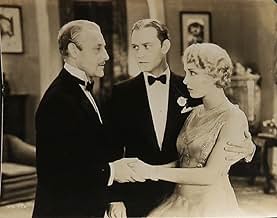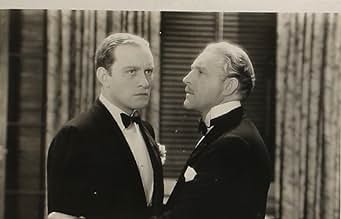Ajouter une intrigue dans votre langueEdward Wales stages a seance to catch his friend's murderer. With 13 suspects, one kills again during the seance. The medium investigates when someone close is accused, aiming to expose the ... Tout lireEdward Wales stages a seance to catch his friend's murderer. With 13 suspects, one kills again during the seance. The medium investigates when someone close is accused, aiming to expose the real culprit.Edward Wales stages a seance to catch his friend's murderer. With 13 suspects, one kills again during the seance. The medium investigates when someone close is accused, aiming to expose the real culprit.
- Réalisation
- Scénario
- Casting principal
- Récompenses
- 1 victoire au total
- Dr. Philip Mason
- (as Charles Quartermaine)
Avis à la une
Lugosi's character is investigating a murder - two actually. At the beginning of the film, Spencer Lee, described by his own best friend as a rotter, has already been murdered by person unknown. Apparently Lee was quite a lady's man and generally just a bad guy all around, so any number of people could have killed him. The best friend, Edward Wales, suggests a séance conducted by the previously named mystic. Meanwhile, the son of an aristocratic family (Conrad Nagel as Richard Crosby) is having trouble with his fiancée (Leila Hyams as Helen O'Neil) who says she has no right to marry him. Richard thinks it is because she is a secretary and he comes from a rich family, but there is obviously something else troubling Helen a great deal.
The séance is held in the Crosby home, and the participants see this mainly as an interesting diversion, but when the time comes for Wales to ask the spirit of his dead friend, Spencer Lee, who murdered him, there is a scream, and when the lights come on, Wales is dead with a knife in his back. Supposedly this was done by someone in the séance circle to prevent the spirit of Spencer Lee from answering his friend.
Several other reviewers note Bela Lugosi as the reason to watch this one, but I pick Margaret Wycherly as the psychic. She plays one of the oddest and most intriguing characters of any era of film. She acts more like a tour guide in her friendliness than a mystic, and then proceeds to show everybody all of her tricks when she is faking as a means of proving that this time she is not faking. She actually solves the crime with the help of Lugosi's character, who, upon hearing her idea to expose the murderer says "What you propose is too horrible to contemplate – but we will do it!" She gives such an odd but likable performance it is a wonder she wasn't nominated for best actress.
This early talkie is not too talkie - in that there may be quite a bit of conversation, but it is all for a purpose. It really is quite creative throughout and the plot twists will keep you guessing. I recommend it, just remember you are dealing with the limitations of very early sound film, which primarily was movement.
The actors, notably Margaret Wycherly, are quite good, with Bela Lugosi giving an energetic reading of a shrewd police detective in a quite different key from his later work. One can't help but wonder what sort of screen actor Lugosi might have become had he not been typecast in horror roles. Leila Hyams is radiant as one of the chief suspects, and it's remarkable that she didn't become a bigger star, on looks alone. There is no pace to speak of in the film, as the story proceeds by dialog, and by people entering and exiting rooms on cue. Nor are there any of the typical Browning flourishes, as the movie seems anonymously directed. But the script is very tight, and there are some surprises along the way, and moments of unexpected warmth and feeling that make this a watchable and satisfying antique.
Le saviez-vous
- AnecdotesCompleted July 16 1929, the first sound feature in which Bela Lugosi's famous Hungarian tones were heard. This was Bela Lugosi's first venture with Browning. Two years later, the director cast him in the film version of the Bram Stoker vampire tale after Chaney, Browning's first choice for the role, died. Lugosi and Browning made one other film together, Mark of the Vampire (1935), in which he played Count Mora, a knock-off of his more famous blood-sucking cousin.
- GaffesThere are several scenes where it appears the actors are waiting for their cues before they start talking, most notably when the Inspector calls them all into the room to re-create the séance.
It isn't a "goof" that the actors seem to be waiting for their cues before they start acting. Many of the earliest MGM talkies employed a technique of long, lingering inactive moments at the beginning and ending of reels, which apparently were supposed to take the place of a leader when they changed over, perhaps accommodating the Vitaphone print versions. Years ago, when these titles appeared on TV, they didn't do that, so maybe Movietone versions were more succinctly edited.
- Citations
Inspector Delzante: [Interrogating Madame La Grange, consulting his notes] Perhaps this will refresh your memory.
- Versions alternativesMGM also released this movie in a silent version at 1628.55 m in length. The silent version of the film is considered lost as of February 2021.
- ConnexionsReferenced in You Must Remember This: Bela and the Vampires (Bela & Boris Part 2) (2017)
Meilleurs choix
Détails
- Durée
- 1h 12min(72 min)
- Couleur
- Rapport de forme
- 1.20 : 1

























